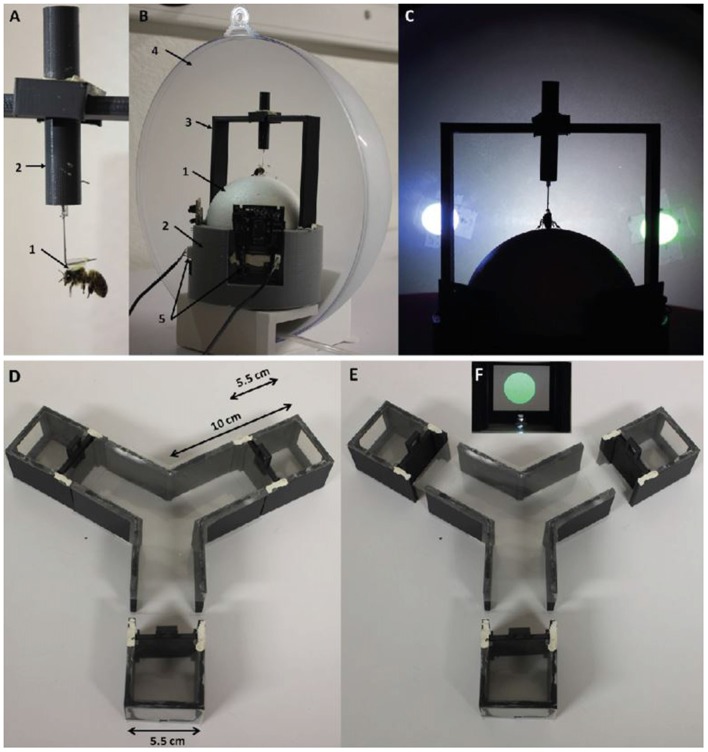Figure 1.
Experimental setups. The virtual reality (VR) setup (A–C) and the Y-maze (D–F). (A) A bee tethered by the thorax by means of a vertical attachment (1) made of a custom-built tag (1) and an L-shaped metal piece glued to the thorax. The metal piece was enclosed in a plastic cylinder (2), which allowed its vertical displacement and thus the accommodation of the bee on the surface of the treadmill (2). (B) Global view of the VR system. The polystyrene ball (1) floated on a constant airflow provided at the basis of a ball support (2). The tethered bee was placed on the ball thanks to a holding support (3). The apparatus is placed behind a semi-spherical opaque screen (4) on which visual stimuli were projected. Two optic-mouse sensors (5) were placed on the ball support, at 90° of each other to record the ball movements. The setup translates the movements of the walking bee into rotations of the ball. (C) Front view of the setup during a conditioning trial. The tethered bee walking stationary faced the two-colored discs presented at −45° and +45° of its longitudinal axis. (D) Top view of the Y-maze. Each arm was connected to a removable box with a sliding door, which allowed displacing an enclosed bee from an arm to another. Arms were 10 cm in length, 4 cm in height and 5.5 cm in width. Each box had a length of 5.5 cm. (E) Top view of the maze showing the disconnected boxes and how they could be interchanged between arms of the maze. (F) Front view of the inside of a box. A color disc was projected by the video projector onto the article screen placed at the end of each box.

